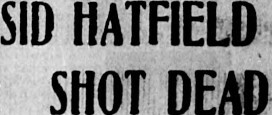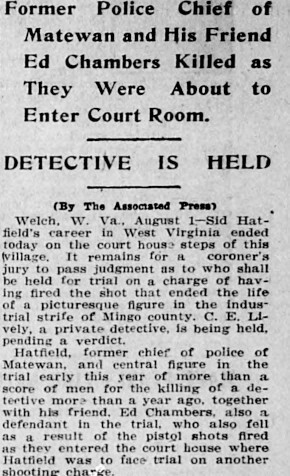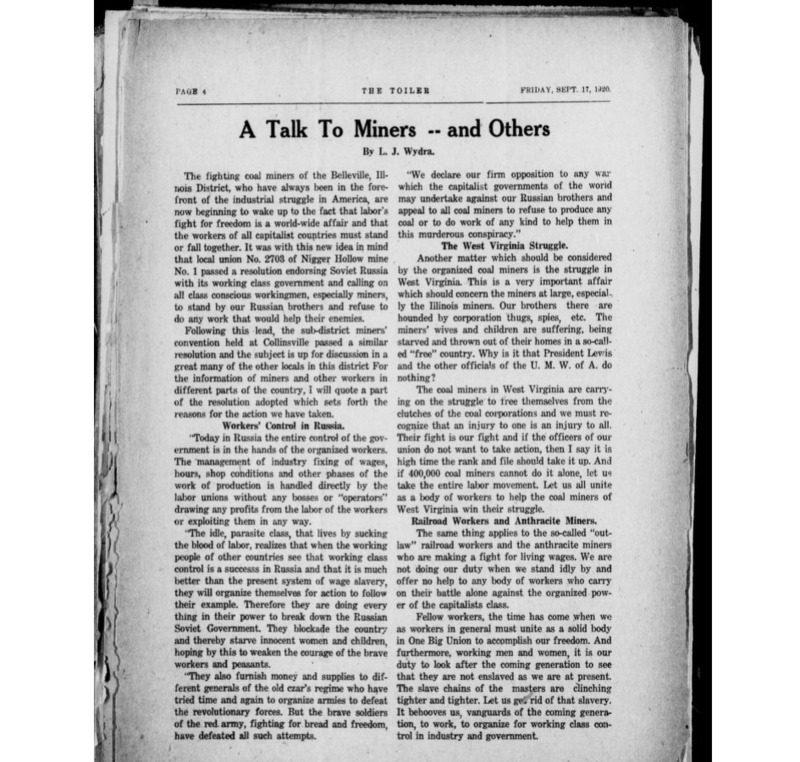Pre-Conflict Background
The article to the left is from the Herald Democrat, published August 1st, 1921. The miners of West Virginia looked to Sheriff Sid Hatfield as a hero for their cause, and his murder was the proverbial straw that broke the camel’s back, and the miners began their uprising.
The Battle of Blair Mountain was not a conflict that had a recent origin or cause. There were years and years of bitter labor disputes between miners and coal companies of southern West Virginia (Andrews, 2016). The counties of Mingo, Logan and McDowell in West Virginia were considered coal towns and workers were paid low wages in company currency, also known as “scrip”, safety conditions were deplorable, and mine operators refused to allow unions to represent the workers, often resorting to violence and intimidation to keep them out (Andrews, 2016).
This exhibit aims to show you the timeline of events as portrayed by the media/press.Coal companies intimidated and harassed workers, keeping control of them and their entire lives which in turn threatened the miners and their families’ livelihoods if they spoke up or spoke out about the working conditions. Not only did the coal companies have thugs to harass miners who stepped out of line, but the coal companies owned the entire town the miners lived in. From the housing the miners and their families lived in, to the grocery stores they shopped at, the doctors they visited and the entire town: the coal companies owned everything about their lives. The companies compelled their workers to sign so-called “yellow-dog contracts” where the miners pledged to not organize/unionize (Andrews, 2016). All of the aspects of the miners were owned by the coal company. Companies understood that and knew it gave them significant power over the miners to keep them quiet and complacent.
The United Mine Workers (UMW) was a mining union that represented the miners. Despite the coal companies attempts to keep the UMW out, they began to organize workers in Mingo County in 1920 (Andrew, 2016). Because of the hold the coal companies had on the miners, when they caught wind of the UMW involvement, they send their ruffians to evict the miners from the company owned homes in the town of Matewan, WV. The Mayor Cabell Testerman and a pro-union sheriff named Sid Hatfield gathered some help and confronted them in May 1921, and on August 1, 1921, Sheriff Sid Hatfield was shot dead by the ruffians when he entered the local courthouse (Andrews, 2016).
The article on the right gives some background to the struggles that miners had not just in West Virginia, but all across the Appalachian mining communities.


